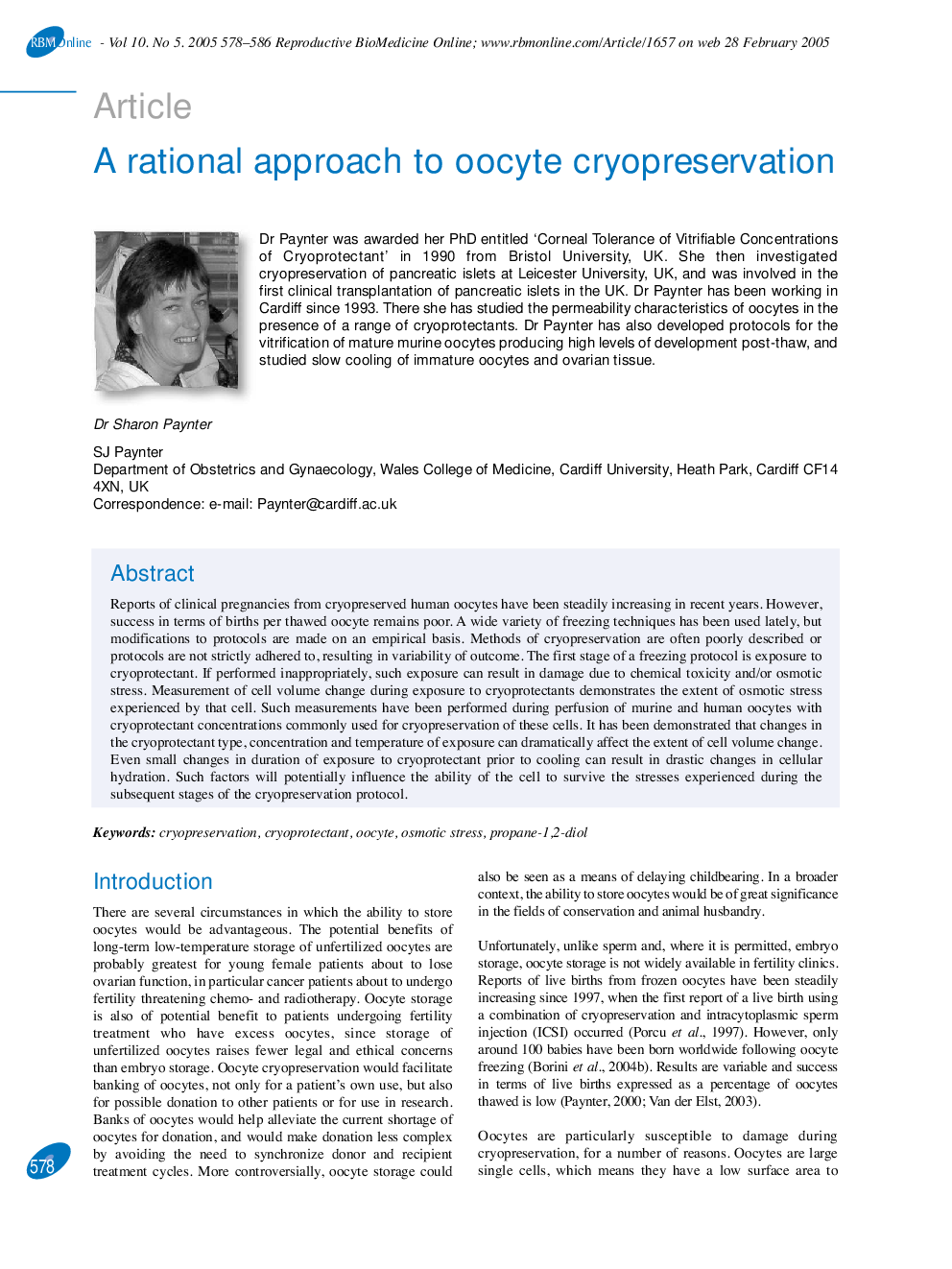| Article ID | Journal | Published Year | Pages | File Type |
|---|---|---|---|---|
| 9335327 | Reproductive BioMedicine Online | 2005 | 9 Pages |
Abstract
Reports of clinical pregnancies from cryopreserved human oocytes have been steadily increasing in recent years. However, success in terms of births per thawed oocyte remains poor. A wide variety of freezing techniques has been used lately, but modifications to protocols are made on an empirical basis. Methods of cryopreservation are often poorly described or protocols are not strictly adhered to, resulting in variability of outcome. The first stage of a freezing protocol is exposure to cryoprotectant. If performed inappropriately, such exposure can result in damage due to chemical toxicity and/or osmotic stress. Measurement of cell volume change during exposure to cryoprotectants demonstrates the extent of osmotic stress experienced by that cell. Such measurements have been performed during perfusion of murine and human oocytes with cryoprotectant concentrations commonly used for cryopreservation of these cells. It has been demonstrated that changes in the cryoprotectant type, concentration and temperature of exposure can dramatically affect the extent of cell volume change. Even small changes in duration of exposure to cryoprotectant prior to cooling can result in drastic changes in cellular hydration. Such factors will potentially influence the ability of the cell to survive the stresses experienced during the subsequent stages of the cryopreservation protocol.
Related Topics
Health Sciences
Medicine and Dentistry
Obstetrics, Gynecology and Women's Health
Authors
SJ Paynter,
